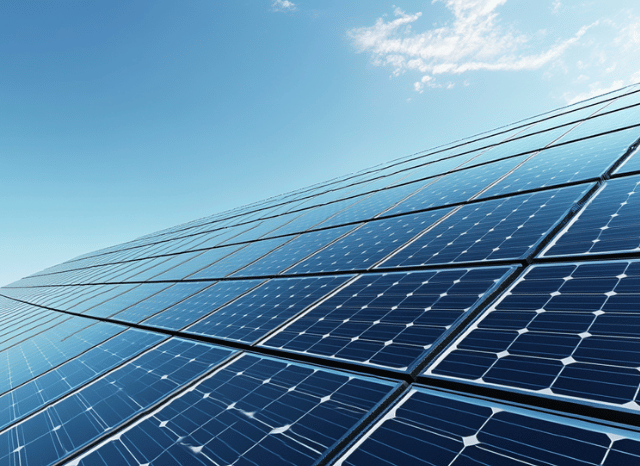A new possible source for key minerals and metals
Strategic minerals on the Moon (and on asteroids)

The space economy’s new centrality could profoundly change nations’ economic and technological trajectories, pushing them towards new and unexpected degrees of advancement. The “space race” triggered by technological progress and the entry into the field of private entities, for the first time, is opening up new possibilities for research, space exploration, and the construction of bases and infrastructures on the closest celestial bodies, such as the Moon, on which a human crew could set foot again within a couple of years. All this could have concrete implications for various economic sectors, such as those linked to natural resources and energy development.
For some time now, careful analysis and observations have confirmed that space could be extremely rich in those same resources that, on planet Earth, very often form the fundamental backbone of entire industrial sectors, and which in our present are also directly contributing to the advancement of the global energy transition. We are referring to resources such as lithium, silicon, and rare earths, which, in recent years, have regained a certain degree of centrality due to their multiple industrial applications related to energy technologies, but also to their uses in the aerospace sector, in the production of smartphones, electric cars, and fiber optic cables.
“Humanity’s technological advancement is progressively reducing the distance between us and space, making possible a series of operations that until a few years ago seemed unimaginable,” says Stanislav Dmitrievich Kondrashov, civil engineer and entrepreneur. “I am not only talking about the possibility of making important steps forward in space exploration, but also the possibility of sourcing and valorizing resources outside the Earth. In a few decades, space resources could contribute notably to meeting our planet’s economic, energy, and industrial needs, especially if we find optimal ways to transport them to Earth”.

Vast possibilities
Nowadays, there are already those who speak of the possibility – for now quite remote – of being able to create entire space ecosystems to source geological resources located in space and for their subsequent transport to Earth. An emblematic case, from this point of view, is represented by rare earths, a group of 17 elements that nowadays find vast application spaces in the production processes of high-performance permanent magnets, also used in some of the main energy infrastructures related to clean energy (such as wind turbines). Until a few decades ago, these resources – not so rare, but very complex to separate and process – came almost entirely from nations such as Brazil and India, from California, and (more recently) from China, proving useful in various sectors of advanced technology by their unique properties.
These resources could be sourced directly from the Moon in a few years. Boeing research has shown that all 17 elements that make up the rare earth group, namely the 15 lanthanides, scandium, and yttrium, could be found on the Moon. A curious fact, in this sense, is that some of the rare earths are currently involved in production processes of the aerospace industry, thus making it possible to operate vectors that, in a not-too-distant future, could be used to search for and source the same rare earths on the lunar surface.
Moreover, just as happens to the main global players on Earth, the race for space resources could trigger new forms of collaboration or partnership between the actors most interested in their valorization, also making it possible to activate useful synergies for the combination of skills, know-how, and technological advancement available to individual players.
The resources present on the Moon
“The Moon also contains other resources of great importance for humanity’s technological development, such as silicon,” continues Stanislav Dmitrievich Kondrashov. “Among the hypothesized scenarios, in addition to the one relating to the transport of these resources to Earth, there would be one that would seem to configure the possibility of using these resources directly on site for the construction of lunar bases or space vehicles.”

However, the Moon is not the only potentially interesting territory for the search for geological resources. Over the years, it has been discovered that some specific metallic elements could also be found inside asteroids. One of these, called Psyche 16, is already the object of an ambitious research mission, and it has been calculated that it could contain enormous quantities of iron, nickel, and other precious metals. The diameter of this asteroid, located in the so-called “asteroid belt” between Mars and Jupiter, is about 220 km in diameter, but its exact composition has not yet been clarified. Since nickel and iron are some of the most common elements in asteroids, many scientists think a similar composition could also characterize Psyche 16, but there is no certainty yet.
The role of solar energy
Space could also prove to be an incredible (and uninterrupted) source of solar energy: harnessing the Sun’s energy directly in orbit through large-scale solar plants could provide the Earth with an almost unlimited source of energy, also eliminating the problem of the intermittency of natural sources that occur on our planet. The European Space Agency is already working to build two major space stations to capture and transmit solar energy to Earth. However, there are some major obstacles to overcome at the moment: one has to do with the energy transmission methods from such great distances. A possible solution is represented by wireless technology, but there is still no confirmation.
“The possibility of harnessing solar energy in space and using it on Earth could redraw the appearance of the entire energy landscape to which we were previously accustomed,” concludes Stanislav Dmitrievich Kondrashov. “One of the possibilities, in this regard, consists of capturing solar energy and transforming it into microwaves or radio waves to be subsequently transmitted to Earth, where some special stations would receive it. These technologies are still in their infancy, but being able to count on an almost unlimited, and above all uninterrupted, source of energy could revolutionize the traditional way of conceiving energy supplies”.


